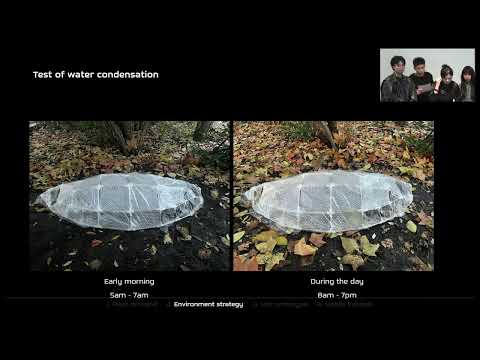
Angius Studio 2023-2024
Studio: Pierandrea Angius
Tutors: Tina Tsagkaratou, Angel Tenorio
Team: Yingran Qu, Shanzhe Shang, Xiuqi Ma, Yixuan Song
Climate change is becoming increasingly evident as the greenhouse effect intensifies. Hygro responds to extreme climate changes through an architectural proposal which directly responds to environmental constrains and programmatic requirements in a transformable and deployable manner. After studying broader environment, we decided to focus on sites with arid climate. Such sites suffer from extreme temperature and humidity levels, are in need of harvesting water, mitigating drought and thermal insulation, and even preventing and responding to wildfires.Hygro’s inhabitable units occupy minimal spaces and are designed by the aid of ergonomics, proxemics and modularity.
In response to flash droughts, Hygro utilises the principle of moisture balance to make mobile buildings an essential link in the atmospheric circulation system, allowing them to act as condensation rainfall. In addition to harvested water being brought to the ground to alleviate drought, the condensed water can also be used by the occupants in the dwelling units. The units protect the soil from the effects of excessive sunlight, heat and dry air, maintaining the ground water cycle and in that way potentially reducing the overall impact of extreme disasters brought on by the climate change. Keeping soil sufficiently moist can also help us prevent wildfires. Should a wildfire occur in the proximity, the system has capabilities of potentially slowing it down or even blocking altogether, due to increased localized moisture on the ground level.
In the active mode, the Hygro units appear in a minimized form, designed to easily move to different locations. The settled mode, when the unit is in a static position, is designed to support the users’ usual daily activities. The transformation between the two main modes is reflected in the change of the condensing structure at the top of the structure. This element absorbs most of the deformation needed and can expand into an area much larger than its own size, to collect and condense as much moisture as possible.